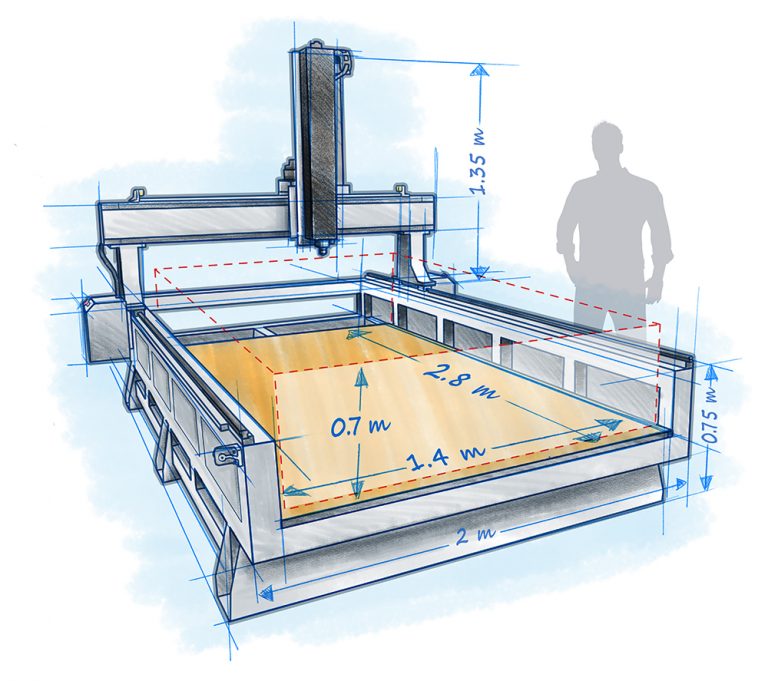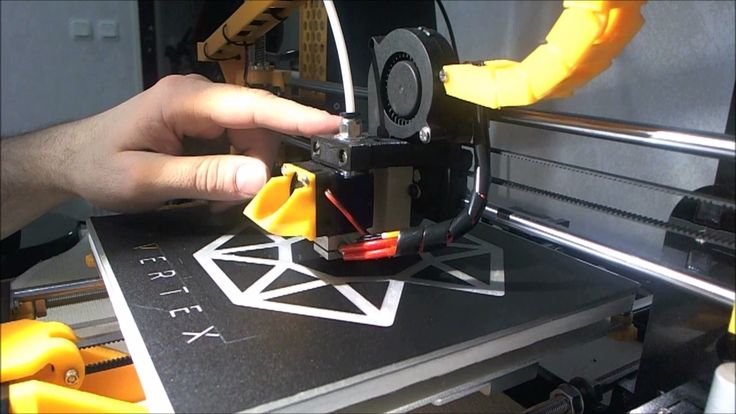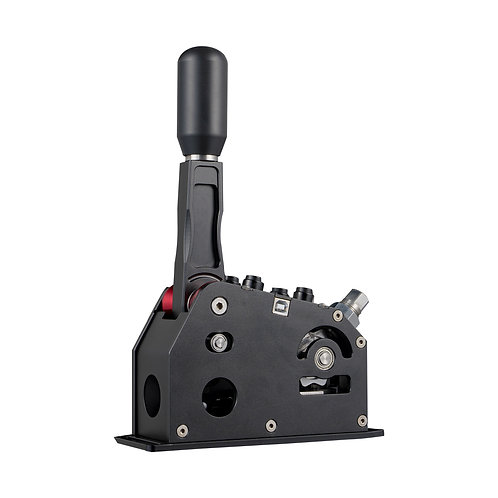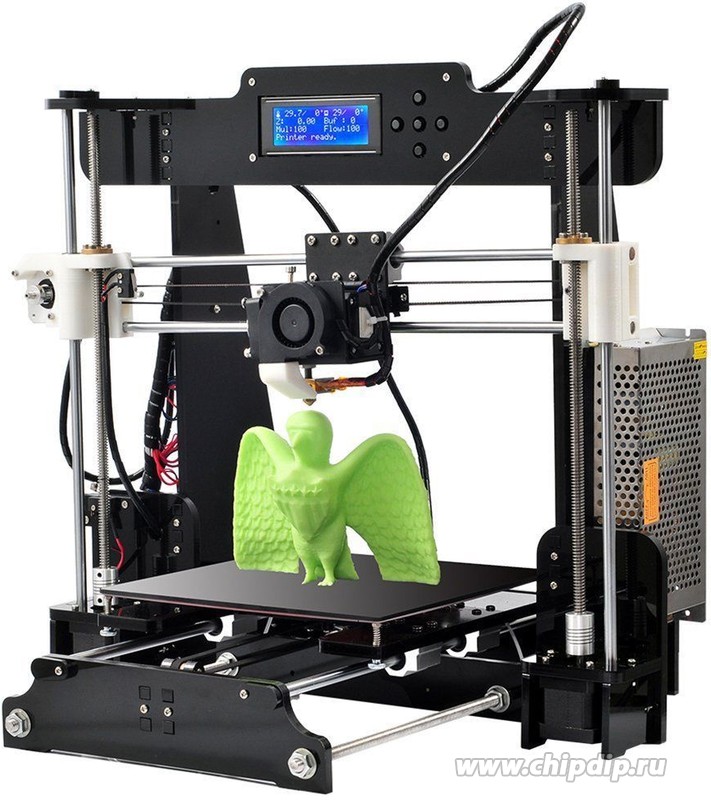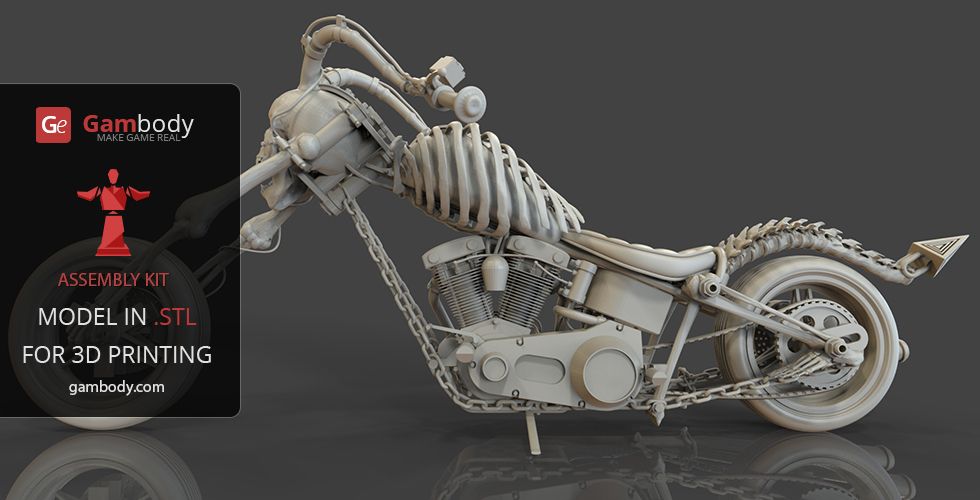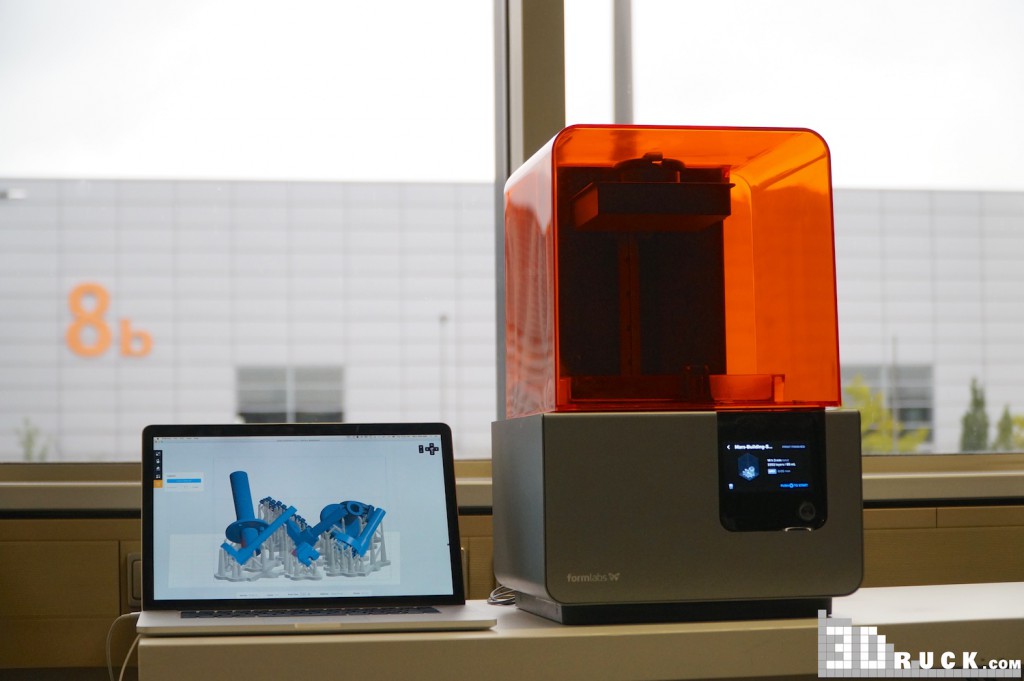What can 3d printers do
What can you make with a 3D printer?
Contact an HP 3D Print expert
Choose the phone number for your country to speak to a local HP 3D Printing sales expert today.
België/Belgique
+32 78 48 44 69
Czech Republic
+420 239 050 531
Deutschland
+49 7031 986 90 13
+49 7031 986 90 17
España
+34 93 003 45 95
France
+33 6 28 78 35 59
Italia
+39 02 8295 2406
Nederland
+31 20 241 5685
Norway
+47 23 96 00 13
Österreich
+43 720 117035
+43 1424 0091
Romania
+40 376 300 174
Sweden
+46 8 446 891 49
Suisse/Switzerland
+41 44 511 2308
+41 44 511 2333
United Kingdom
+44 20 7365 8158
United States
+1 877 468 8369
Data courtesy1
What can you make with a 3D printer and additive manufacturing technologies?
In one way or another, 3D printing is being used in almost all industries. So, when you’re wondering what can be made with additive manufacturing, the short answer is almost anything.
Applications of additive manufacturing
Many industries are harnessing the power and flexibility of 3D printing. Here are some of the most common products that are currently made with 3D printing:
- Consumer products (eyewear, footwear, design, furniture)
- Industrial products (manufacturing aids and tools, prototypes, functional end-use parts)
- Automotive and aerospace prototypes and final parts
- Medical, healthcare, and dental products
- Prosthetics and orthotics
- Architectural scale models and maquettes
- Reconstructing fossils and ancient artifacts
- Reconstructed evidence for forensic pathology
- Movie props
This list is not exhaustive, and 3D printing is used for a huge variety of purposes. And it’s not just final manufacture, it can help improve almost every phase of the manufacturing process, starting right from the beginning.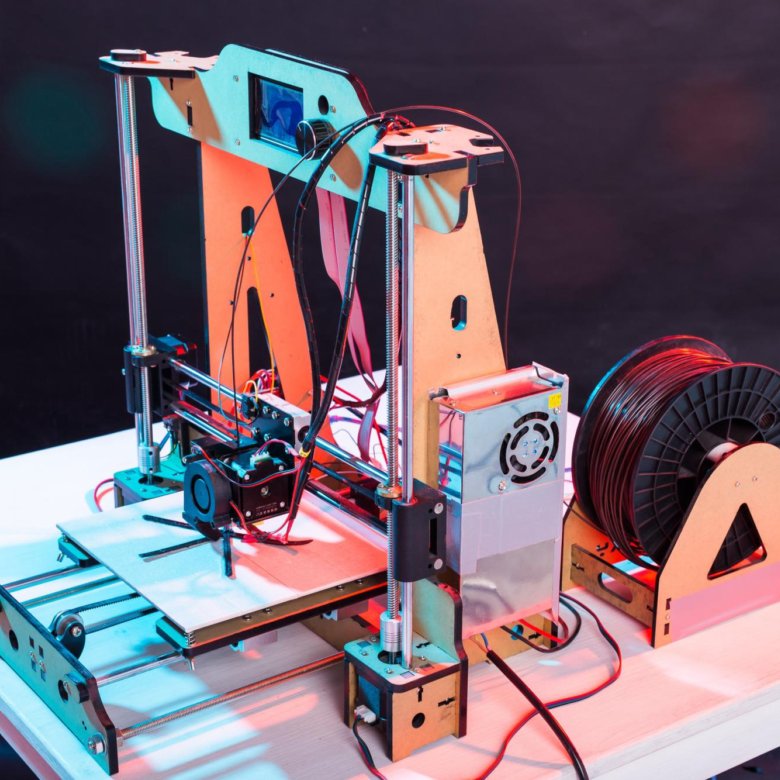
Transforming design with rapid prototyping
Aside from the ability to transform the production of final parts, one of the most useful and common applications of 3D printing and additive manufacturing is for rapid prototyping. Using 3D printing to develop new products is helping manufacturers around the world reduce time to market and increases opportunities for efficiency and innovation.
Back to menu
Why use 3D printers for rapid prototyping?
Basically, because it’s cost effective and fast, in fact, with 3D printing, it can be possible to go from an initial idea to a working prototype in a matter of days. This could cut weeks out of product development time. Depending on the application, you could even make a fully functional prototype in the final material, allowing you to better evaluate and test your designs.
If you need to make changes, you’ll find that iterations are faster and cheaper to make, allowing you and your team to work quickly to improve all aspects of your products.
And you need not stop at prototyping: 3D printing can also be used for short-run production, one-off custom products, or full-scale final part production – and also spare parts. It’s a complete end-to-end technology, so it can transform every aspect of your business.
Sectors that use 3D printing and applications of additive manufacturing
3D printing and additive manufacturing are exceptionally flexible and can be used in almost all industries. Here are a few of the most common industries and examples of how 3D printing and additive manufacturing are being used.
Industrial applications of the additive manufacturing process
3D printing is fast becoming a key technology for efficient design and production in the industrial sector. Examples of industrial 3D printing applications where additive manufacturing can enhance performance and cut lead times and costs include manufacture of machinery and industrial equipment, production line components, robots, and end-of-arm-tooling (EOAT), molds, manufacturing aids, tooling, jigs, and fixtures.
Back to menu
Data courtesy2
3D printing in the automotive industry
Car makers around the world are using 3D printing to design and build prototype and final car parts – as well as spare parts, tools, jigs, and manufacturing aids. Overall, additive manufacturing has shortened the design and production process and has allowed for on-demand manufacturing, which reduces the need for inventory, warehousing, and storage.
But it isn’t just brand-new vehicles that benefit. Automotive enthusiasts are using 3D printed car parts to restore classic cars.
Automotive 3D printing case study
HP 3D printing helps CUPRA Racing create lightweight components for a new race car
Barcelona based SEAT is the only company that still designs, develops, and manufactures cars entirely in Spain. CUPRA is a stand-alone company within the SEAT organization that produces high-performance vehicles, including race cars.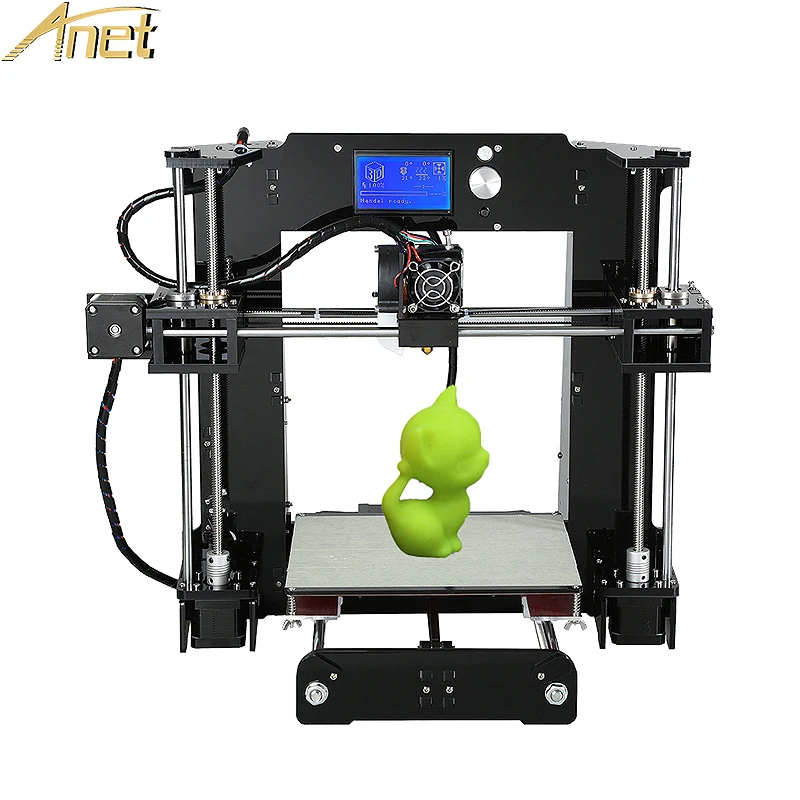
During the conceptualization stages of their new racing car the CUPRA Leon Competición, CUPRA was faced with the challenge of quickly creating prototypes for some of the car’s lightweight components, including side mirrors, air vents, and a central control module for the steering wheel.
CUPRA turned to 3D printing - specifically the HP Jet Fusion 5200 Series 3D Printing Solution. Together, they were able to rapidly iterate designs, test those designs, and progress to the final product in a reduced time frame.
HP Metal Jet reduces car part production time at Volkswagen
Volkswagen, one of the world’s largest and most innovative vehicle makers, has adopted HP Metal Jet technology to produce high-performance functional car parts with specific structural requirements, such as gearshift knobs and mirror mounts.
Data courtesy3
“Our vision to industrialize additive manufacturing is quickly becoming a reality with HP Metal Jet.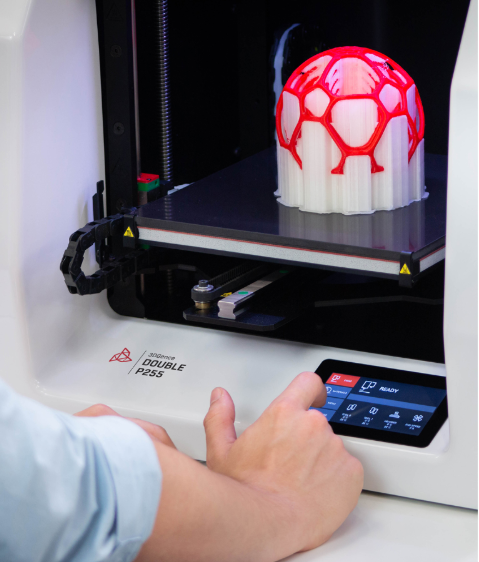 It is a game changer for the automotive industry,” says Dr. Martin Göede, Head of Technology Planning and Development for Volkswagen.
It is a game changer for the automotive industry,” says Dr. Martin Göede, Head of Technology Planning and Development for Volkswagen.
Back to menu
3D printing in the aviation and aerospace industry
Aviation and aerospace companies were early adopters of printing and additive manufacturing. As you might expect, some of the most rigid performance standards apply to this industry, and that creates the need for parts that are reliable in demanding conditions. Engineers who are designing and manufacturing for commercial and military aviation and aerospace need components made from the highest performance materials, and 3D printing is being used at all stages of design and production.
Back to menu
3D printing in the construction, architecture, and interior design industries
While 3D printed houses are already commercially available, most construction companies use the technology to produce pre-fabricated parts, often onsite.
These are usually large-scale concrete printing systems with wide nozzles that allow for large flow rate. This can be used to lay down concrete layers quickly, but also repeatably. However, 3D printing can also be used for more delicate and refined parts and intricate models as well.
Prior to construction, 3D printing can be beneficial to architects during the design phase. Take, for example, the Korean 3D printing service HS HI-TECH which used HP Multi Jet Fusion 3D printing technology to create uniquely designed architectural elements and build modular structures.
3D printing can also bring great benefits in terms of innovation and design freedom for interior design, home decoration, and furniture – such as custom-designed furniture and lighting.
Back to menu
3D printing for the medical and healthcare industry
The medical and dental industry is one of the fastest-growing adopters of additive manufacturing. From medical devices to prosthetics and even bioprinting, the applications of additive manufacturing for the medical industry are wide-ranging and often revolutionary.
The benefits of 3D printing for medical and dental
The freedom afforded by 3D printing and the ability to provide personalized solutions for patients in an efficient manner is driving huge growth in the medical and dental sectors. When coupled with detailed scanning, 3D printing can be used to provide highly customized patient-specific solutions like orthotics, prosthetics, or dental appliances.
Thanks to rapid prototyping, medical device manufacturers have freedom to design new products and help bring new medical devices to the market faster than ever.
Medical 3D printing case studies
Everex manufactures medical devices faster and at a lower cost
Everex is an Italian engineering company that creates unique and technologically advanced products that specialize in instruments for in-vitro diagnostic (IVD) analysis, the concept, and design of which are proposed by the customer.
Everex has recognized 3D printing as a crucial technology for new products, specifically in the field of diagnostic instruments.
One of Everex’s devices is called Hemo One, which is used to analyze samples of blood through clinical chemistry. All parts that comprise Hemo One were previously produced using traditional methods, but now are made with 3D printing or additive manufacturing.
Data courtesy4
Biotec Italia s.r.l. produces electromedical parts faster with HP 3D Printing
Biotec Italia s.r.l. produces machinery for electromedical and aesthetic applications. Biotec wanted to manufacture parts for its CoaxMed machine, a revolutionary combination of monopolar, bipolar, fractional radiofrequency (RF), low-frequency ultrasound, vacuum massage, and cryliposculting technologies, and turned to HP Multi Jet Fusion (MJF) technology to help accelerate production.
3D printing for orthotics and prosthetics
With its core focus on enhancing patient comfort, the medical industry is leveraging the capabilities of 3D printing to create patient-specific devices, like prosthetics and orthotics. The benefits of design freedom and rapid production of customized devices make 3D printing an appealing alternative versus traditional manufacturing methods.
The benefits of design freedom and rapid production of customized devices make 3D printing an appealing alternative versus traditional manufacturing methods.
Data courtesy5
Additive manufacturing for bioprinting
One of the most revolutionary applications of 3D printing is its potential use in the nascent field of bioprinting. Around the world, biotech firms, researchers, and academics are exploring the possible use for 3D printing in tissue engineering applications to create cells and organs, including inkjet bioprinting techniques, where layers of bio-ink, that is mostly comprised of cells, are deposited onto a hydrogel substrate, and are then slowly built up to form fully 3D structures.
Back to menu
The role of 3D printing technology during the COVID-19 pandemic
In spring 2020, hospitals were confronted with a new challenge when the COVID-19 virus began to take hold around the world. It wasn’t long before the global supply of personal protective equipment (PPE) and medical devices were dwindling, and the medical community turned to technology to solve the shortage. Throughout the pandemic, 3D printing was used to supply healthcare staff with much-needed PPE, as well as spare parts to fix overworked ventilators.
It wasn’t long before the global supply of personal protective equipment (PPE) and medical devices were dwindling, and the medical community turned to technology to solve the shortage. Throughout the pandemic, 3D printing was used to supply healthcare staff with much-needed PPE, as well as spare parts to fix overworked ventilators.
Global corporations, start-ups, and even high-school students with 3D printers answered the call. Thanks to 3D printing, millions of items of PPE and ventilator parts have now been shipped to hospitals around the world.
HP 3D Printing helped enable the design and manufacture of millions of critical medical parts to help mitigate the medical supplies shortage.
3D printing in the dental industry
The dental industry may contain the single most 3D printed object in the world: the mold for clear aligners. These molds can be 3D printed with powder- and resin-based 3D printing processes, and with material jetting. But this is not the only dental product to be 3D printed: in fact, crowns, dentures, and surgical guides can all be made too.
But this is not the only dental product to be 3D printed: in fact, crowns, dentures, and surgical guides can all be made too.
Dental 3D printing case study
SmileDirectClub scales dental aligner 3D print production to deliver straighter smiles to millions
SmileDirectClub is the first direct-to-consumer med-tech platform for teeth straightening and transforming smiles. SmileDirectClub had a dental aligner production method in place since its inception in 2014, but due to its growing customer base, the company needed a manufacturing technology that would allow them to meet the increasing demand for at-home clear aligner therapy. Their previous technology produced delicate, fragile parts at slow speeds and high costs.
Data courtesy6
“The volume output over a 24-hour time frame was low and we needed to find a way to increase volume output,” said John Dargis, Vice President of Manufacturing for SmileDirectClub.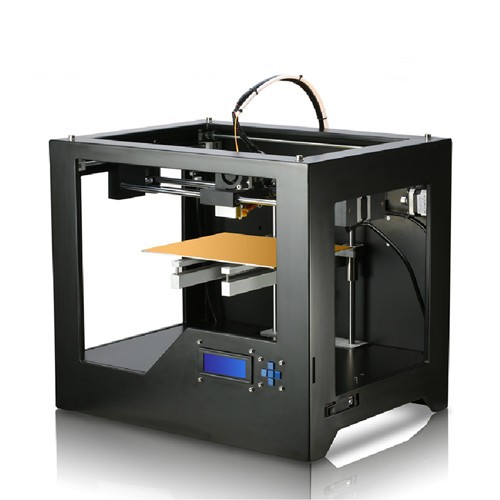
This led Dargis and his team to research technologies that would enable them to mass-produce molds to create dental aligners, and thus deliver orthodontic solutions to customers more quickly. Today, they use HP 3D Printing, and the impact has been transformative.
Back to menu
3D Printing in the consumer goods industry
3D printing in the footwear sector
Before shoes were made in a range of uniform sizes, they were all custom made to fit individual feet. However, the requirement to produce in large quantities made custom production prohibitively expensive.
With 3D printing, custom-made footwear can be produced, even at scale.
“One hundred years from now, we might look back and see that the moment of industrialization where we had to fit into pre-existing sizes and styles was a blip in the history of shoemaking,” says Elizabeth Semmelhack, senior curator at the BATA Shoe Museum in Toronto.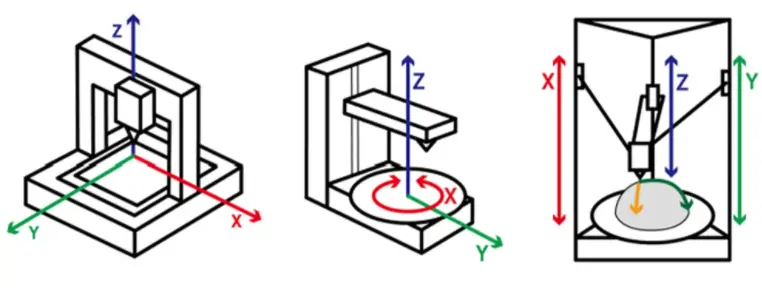 “Today, we’re moving back to bespoke footwear.”
“Today, we’re moving back to bespoke footwear.”
Data courtesy7
This revolution is led by new technologies that scan your foot and create a digital 3D model of your foot. That model is sent to a 3D printer, which creates a unique insole that you can wear inside any shoe, allowing everyone to experience a new era of truly personalized shoe shopping.
3D printing in ophthalmology and eyewear
3D printing is a particularly suitable production method for eyewear frames because the measurements of an individual are easy to process in the end product.
Eyewear 3D printing case study
HORIZONS OPTICAL manufactures parts for custom eyewear with HP Multi Jet Fusion.
HORIZONS OPTICAL develops technologies and services to ophthalmic laboratories, optical chains with production capacity, and other industries in the optical sector. HORIZONS OPTICAL’s “Made4U” concept allows customers to personalize their eyewear based on their unique physical characteristics, visual needs, and personal taste.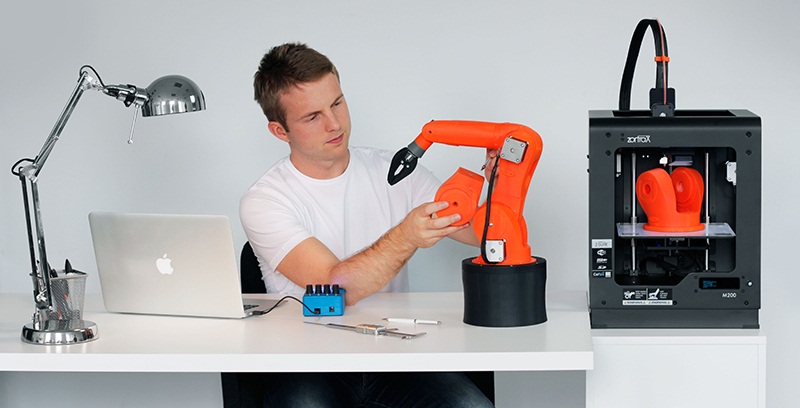
Data courtesy8
With HP Multi Jet Fusion technology, HORIZONS OPTICAL created an end-to-end solution for customized eyewear. This includes using specialized software to take a 3D scan of the face, collect biometric data, allow customers to virtually try on glasses, and choose from a range of color options for the frames. Once the customization and fitting processes are completed, the glasses are sent to be 3D printed.
Back to menu
3D printing in the jewelry and wearables industry
3D printing can produce jewelry with direct or indirect production processes. Direct includes the creation of an item straight from a 3D design, while indirect manufacturing is 3D printing a mold that will be used to later create an item of jewelry. Working in either of these ways is helping to revolutionize the jewelry industry around the world.
3D printing in the sports equipment sector
Unlike other clothing and fashion sectors, the sports equipment industry places its primary focus on performance. This means that offering a customized fit can enhance the performance of an athlete and give them a competitive edge over their opponents. 3D printing is helping to provide custom-made equipment and footwear to sports professionals and athletes around the world.
This means that offering a customized fit can enhance the performance of an athlete and give them a competitive edge over their opponents. 3D printing is helping to provide custom-made equipment and footwear to sports professionals and athletes around the world.
Sports equipment 3D printing case study
Cobra Golf and Parmatech 3D print custom made golf putters
Cobra Golf and Parmatech used HP Metal Jet to launch Cobra Golf’s 3D printed golf putter: the KING Supersport-35. This limited edition, fully 3D printed putter with SIK face technology delivers the next level in personalization and putter performance.
Data courtesy9
Other 3D printing applications for the sports industry can range from protective sports equipment, including helmets and padding, or even innovative table tennis accessories.
Back to menu
3D printing in the education sector
3D printers have a variety of applications in the classroom and can enable teachers and students to create new models and prototypes quickly and cheaply.
There are still only a few degree courses that entirely specialize in additive manufacturing, but they are growing all the time, and many engineering, design, or product development departments will now have access to an onsite 3D printer. This is in addition to courses that allow students to specialize in CAD and 3D design, all of which can encompass experience with 3D printing.
No matter what the subject is, if the production of rapid models or prototypes is required, 3D printing is the optimum solution. Whether architectural, industrial, or even artistic models are required, 3D printing offers the fastest way to work, the best results, and a chance to future-proof the education of students around the world.
Back to menu
Want to continue learning?
Footnotes and disclaimers
- Data courtesy of Cupra
- Data courtesy of Fast Radius
- Data courtesy of Volkswagen
- Data courtesy of Everex Srl.

- Data courtesy of Twikit. Printed by ZiggZagg (HP DMN partner)
- Data courtesy of SmileDirectClub
- Data courtesy of Superfeet
- Data courtesy of Horizons Optical SLU
- Data courtesy of Cobra Golf
25 (Unexpected) 3D Printing Use Cases
For years, hype around 3D printing captured audiences in the mainstream press. With visions of a future including a 3D printer in every home, these predictions were light on details and ultimately most did not come to fruition. However, the possibilities of 3D printing were undeniable, despite the youth of the technology and the relatively low number of use cases that were viable in the past.
The initial hype masked legitimate and growing business applications for 3D printing. With a proliferation of high-performance desktop and benchtop machines being introduced into the market, we are now seeing a broader variety of businesses expanding their product offerings and delivering better results to customers.
What can you do with a 3D printer? Read on to discover 25 (often unexpected) 3D printing use cases that show the broad scope of possible applications for the technology.
Report
A new industry report that compares how recent and early adopters are using 3D printing for their business, and explores future trends of the technology.
3D printing can add enormous value to supply chains, unlocking a broad spectrum of production applications. The technology is growing more workable and affordable, with companies able to bring additive manufacturing in-house to support processes on the factory floor. New, resilient 3D printing materials are opening opportunities for the production of high precision, functional 3D prints that can stand in for final parts, offering customization opportunities that help designers radically push the boundaries of high-performance cars. Industrial design studio Vital Auto has put all of this technology to work creating high-fidelity prototypes and concept cars, rapidly working through iterations using a variety of advanced tools, including a large fleet of in-house 3D printers.
“We've used 3D printing from day one. We wanted to introduce it to our manufacturing processes, not only to reduce costs, but to give the customer more diversity with their designs and their ideas,” said Design Engineer Anthony Barnicott.
The automotive industry has seen the value additive manufacturing can add to multiple touch points in the creation of automobiles. This means going well beyond rapid prototyping to include:
- Creating custom, complex, and high-performance parts
- Producing tooling and manufacturing aids
- Manufacturing replacement parts and spare parts on demand
- Cutting costs and lead times by up to 90% compared to outsourcing
See How Concept Cars Are Created
Recent advancements in 3D printing technology have started to fundamentally change the audio industry, meaning that digital printing of custom fit ear devices for the audiology, noise protection, and consumer audiology industries has never been so affordable. In recent years, 3D printing manufacturers have brought skin-safe biocompatible materials to market, allowing for in-house production of ear models and headphone tips.
In recent years, 3D printing manufacturers have brought skin-safe biocompatible materials to market, allowing for in-house production of ear models and headphone tips.
Custom fit offers a unique individual listening experience built around the earphone fitting exactly in the customers ear. This gives a secure fit that removes any possibility of earphones falling out of the ear, in addition to improved comfort and noise isolation.
“We are very excited about the concept of custom fit to deliver a custom experience to further enhance immersive listening. Formlabs shares Sennheiser’s drive for innovation – and improving the customer experience through this prototype is a testament to that mindset.”
Sennheiser Director AMBEO Immersive Audio, Veronique Larcher
The challenges that come with customized manufacturing can be overcome through the combination of Formlabs' disruptive printing technology and mobile scanning coupled with machine learning. This means customers can have easy access to custom fit earphones, with lead times reduced from four days to next day delivery or even same day.
This means customers can have easy access to custom fit earphones, with lead times reduced from four days to next day delivery or even same day.
Learn More About 3D Printing in Audiology
restor3D tools being printed, along side their final form.
Ten years ago, few people were talking about the huge impact 3D printing would have on the medical industry, from helping create advanced medical devices to patient-specific surgical guides. One company no one saw coming was restor3d, who leverages 3D printing capabilities to drastically improve surgical care by printing procedure-specific polymer instrumentation tailored to cervical spine implants.
With a fleet of over 25 Formlabs 3D printers in its production line, restor3D is already printing the next generation of surgical tools. For surgeons using these tools, this procedure-specific, single packed sterile instrumentation system results in:
- Replacement of large, expensive surgical trays.
- Ability to iterate designs and quickly introduce new tools or features based on surgeon preferences.

- Dramatic reduction of supply chain and sterilization costs for hospitals.
Read How restor3d Is Creating Next Generation Tools
As much as 3D printing technology has developed in the past few years, there are even more high-impact, use cases currently in development. 3D printed organs is one of them.
Being able to easily create new organs has for decades been a dream for scientists working in regenerative medicine. While it remains in its early stages, the use of the 3D workflow to produce organic tissue eligible for transplant is bearing early fruit.
Dr. Sam Pashneh-Tala from the University of Sheffield is leading the way. His research uses high-precision desktop stereolithography (SLA) 3D printing to enable the production of tissue-engineered blood vessels with a variety of geometries. This will allow for patient-specific vascular graft designs, improved surgical options, and provides a unique testing platform for new vascular medical devices for those suffering from cardiovascular disease—which is currently the number one cause of death worldwide.
“My differentiator is that I’m able to create blood vessels with geometries that are more closely matched to those found in the body. This offers the potential for improved surgical options and even patient-matched blood vessel designs. Without access to high-precision, affordable 3D printing, creating these shapes would not be possible, ” said Dr. Pashneh-Tal.
Read About Tissue Engineering
The reconstruction of the three cities in the two different time periods consisted of over 650 segments, which were printed using Formlabs White Resin, each measuring 12x12cm.
As an industry already based on geometric design, prototyping, and modeling, architecture stands to gain enormously from advances in 3D printing technology.
On top of saving time during model production, the 3D printed models allow architects to anticipate the effects of certain design features with much greater certainty, e.g., by seeing a model produced with a fuller complement of materials, an architect can measure aspects such a light flow through the structure with higher precision.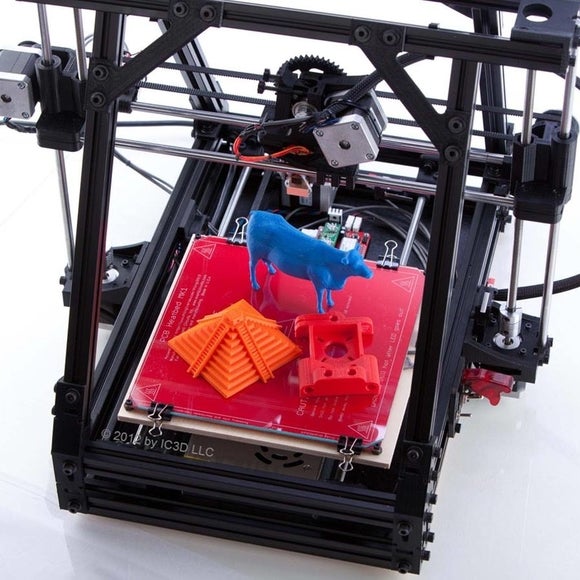
But 3D printing’s use case goes beyond a single model: some firms are recreating entire towns. Institute of Architecture at the Hochschule Mainz - University of Applied Sciences. The result is an extraordinary exhibition that showcases six large-scale models of the cities, in the years 800 and 1250 AD. The models consist of over 650 parts, all of which were created using SLA 3D printing technology.
Learn About the Reconstruction of Medieval German Cities
The 990S TripleCell and the FuelCell Echo Triple.
The sport-footwear industry has long relied on technology to optimize the performance of their products, and with the digital workflow they have more options than ever in customization.
Large brands like New Balance, Adidas, and Nike, having recognized the power of additive manufacture, intend to mass produce custom midsoles made from 3D printed materials. As in other industries, the digital workflow will augment traditional methods of manufacture here—critical, highly-customized components of each product will be entrusted to the 3D printing, and the rest left to traditional means.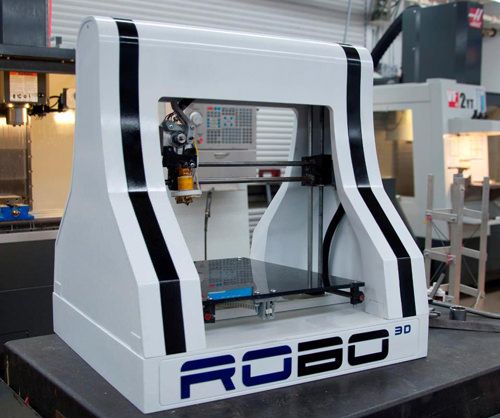
Given the unique properties required for footwear, New Balance worked with Formlabs to create a custom printing material which could resist the daily wear and tear faced by an athletic shoe. Shoe materials experience a variety of environments, with the additional need to withstand various levels of pressure thousands of times per day. Designed to create springy, resilient lattice structures, Rebound Resin has a much higher energy return, tear strength, and elongation than any other Formlabs material. Rebound Resin is strong enough to be used in gaskets, seals, and automotive interiors, but light and flexible enough for the sole of a shoe.
“One of the things that’s really exciting for us is that it provides a very different experience for the runner.”
Katherine Petrecca, General Manager of Footwear at the Innovation Design Studio, New Balance
See the 3D Printed New Balance Shoe
3D printing has already been integrated into the production of Hollywood films and is widely used for practical visual effects and costuming.
Whereas the creation of film's most fantastic creatures once required meticulous handcraft, the increased deadline pressure and time demands of modern moviemaking have made a quicker method of creating practical effects vital. Effects studios like Aaron Sims Creative now use a hybridized approach, practical effect-making enhanced by the digital workflow, to create new opportunities for collaboration and cut lead times on bringing ideas to life.
“The Demogorgon was one of the first prints that we did using our Formlabs 3D printers, and we were amazed. Before that, we had always outsourced printing. So to be able to grow it in-house, and see a design that we helped create from the very beginning printed right in front of us, was kind of an amazing thing. It was like going back to the days when we used to sculpt with clay,” said Aaron Sims.
Read About How Aaron Sims Creative Builds Their Worlds
3D printing's artistic potential is not limited to physical artwork. It also has the power to bring entirely new dimensions to forms like dance and music.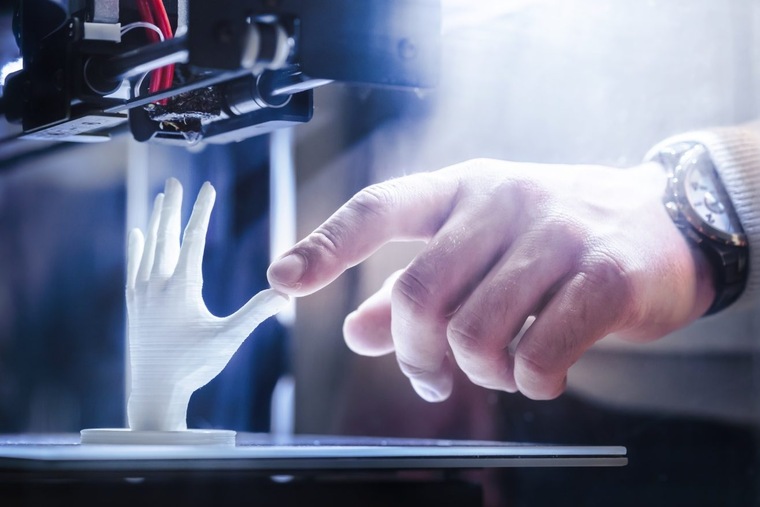 Given the design freedom inherent in 3D printing, even the most complex or unique instruments can be modified or created from scratch, at a fraction of the price of traditionally made instruments.
Given the design freedom inherent in 3D printing, even the most complex or unique instruments can be modified or created from scratch, at a fraction of the price of traditionally made instruments.
Having been around for centuries and barely changing, the violin’s form is recognizable to all. Violin music has evolved to such a high level that the instrument has attained an almost legendary status in our culture. But Formlabs engineer Brian Chan challenged himself to create a fully-functional acoustic violin, using a 3D printer and Formlabs White Resin.
Get an Inside Look at Design Process
3D scanning, CAD, and 3D printing have been used to restore the works of some of history's most famous artists, returning works by the likes of Michelangelo and da Vinci to their former glory.
Art restoration projects can be enhanced by combining 3D printing and 3D scanning, two powerful technologies that allow builders to take physical objects, turn them into three dimensional shapes, make changes or restorations, and re-print the parts.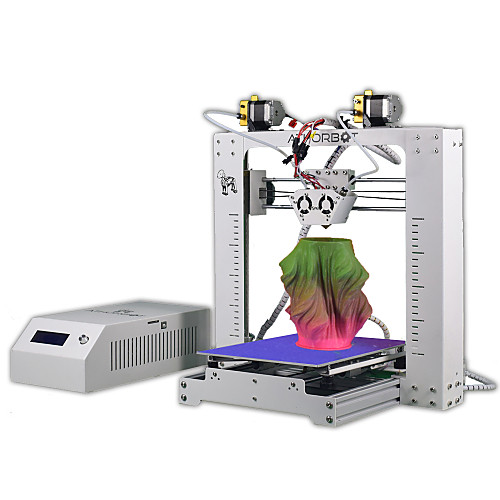
Mattia Mercante uses 3D replication to replace lost pieces of sculptures and fine artworks at the world-renowned Opificio institute in Florence, allowing museum visitors to experience the art as the artists intended.
For one 17th-century reliquary, Mercante scanned intricate frame details from elsewhere on the piece using an HP 3D Structured Light Scanner, and then replicated the missing pieces on a Formlabs 3D printer. The prints were painted to appear identical to the original decorations. Best of all, the restoration required minimum CAD modeling, and was fast and affordable compared to hand craft.
Learn More About Art Restoration
3D printing has as much potential utility in reconstruction as it does in production. The work of a forensic artist is often made difficult by incomplete evidence. Digital technologies can be of tremendous use in legal investigations and can augment the abilities of forensic artists to reconstruct accurate models of persons of interest or victims.
The digital workflow here involves turning CT scans into 3D prints to aid in identification. For instance, when investigators find just part of a skull as evidence, a printer can model and replicate the complete sample.
Reconstructions of the appearance of crime victims have already played a key role in attaining justice, proving once again the utility of 3D printing beyond considerations of design and productive efficiency.
Just like 3D printing can be used for preoperative planning, CT scans of crime victims can help detectives get up-close to bones. Digital CT scan and X-ray data of remains can be used to produce 3D-printed replicas of various body parts. Then, the pathologist can determine the full circumstances of a crime, from the number of participants to the nature of the weapon used.
Learn More About Solving Crime
3D printing's impact is not limited to improving workflows or enabling rapid prototyping. It can also change lives directly. With 30 million people worldwide in need of artificial limbs and braces, there is hope that 3D printing can provide new solutions where cost and specification have traditionally been hurdles.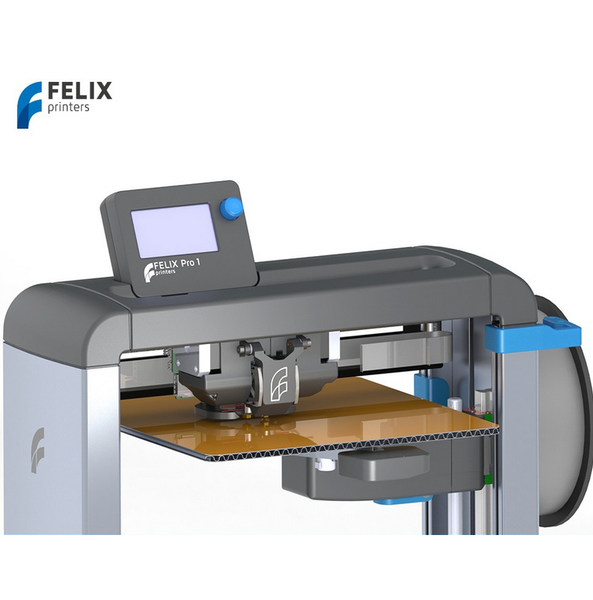
3D printing can provide an affordable alternative that, like many related advances in medicine, can provide therapy that is much more closely tailored to a patient's needs. The affordability and customizability of 3D printing techniques can profoundly alter the quality of life for the better for those suffering from injury or disability, as we saw in this story of a father and son.
We saw this type of innovation first hand with Matej’s and Mateja’s son Nik, who was suffering from cerebral palsy. Matej set out with a simple goal: to enable Nik to walk. Months of research and development followed, resulting in a custom-made, 3D printed orthosis that provides support and correction exactly where Nik needs them, which finally helped him take his first steps independently. Watch the full video above and read their story.
Beyond prosthetics which return lost function to a user’s body, it is possible to 3D print devices which are, in some ways, even better than the limbs they are replacing. With 3D printing, this is no longer a future possibility about bionetic, robo-cop like body parts, but part of the latest in cutting-edge prosthetic production. Some firms, such as Psyonic, are already delivering advanced prosthetics.
With 3D printing, this is no longer a future possibility about bionetic, robo-cop like body parts, but part of the latest in cutting-edge prosthetic production. Some firms, such as Psyonic, are already delivering advanced prosthetics.
Arm Wrestling With A Bionic Hand
Maybe people think of 3D printing as producing smaller items which you can hold. In recent years, firms have been exploring manufacture-scale additive workflows that can produce much larger functional components. In the last few years, various initiatives have gotten underway to create houses and larger structures that are entirely the product of 3D printing, opening new frontiers in sustainable living and construction.
3D printing technique gives freedom of form to architects, even with previously less malleable building materials like concrete. More broadly speaking, it allows fully sustainable and energy-efficient homes to be built that also meet modern comfort standards. Construction by this means could be entirely waste-free, as well as less expensive and environmentally costly as traditional methods.
While you will not be moving into a 3D printed house on the near horizon, you can experience 3D printed construction projects today. The MX3D Bridge in Amsterdam is currently open to foot traffic. According to dezzen.com, the “structure used 4,500 kilograms of stainless steel, which was 3D-printed by robots in a factory over a period of six months before being craned into position over the canal this year.”
Source: www.dezeen.com
Read More About the 3D Printed Bridge
With one of the highest barriers-to-entry of any industry in the world, space travel is ripe for 3D printing innovation. Lowering prototyping costs for expensive, space-specific tools and machines will lower costs and allow smaller companies to help innovate in space.
Aerospace startup Relativity has tested the creation of aluminum rocket engines using additive manufacturing. If successful, this application would sharply reduce the costs and practical difficulties of space travel, opening up the field to new business and to a vast potential for growth.
Masten Space Systems is another changemaker for 3D printing in the aerospace industry: founded in 2004, the company specializes in vertical takeoff and vertical landing rocketry. The company is launching a mission to the moon in 2022 as part of the NASA Commercial Lunar Payload Services (CLPS) Project. Using Formlabs 3D printers, Masten produced plastic rocket engines for R&D testing.
The company has experience in 3D printing in both plastics and metals--they’ve even helped develop new custom metals for their NASA Tipping Point project. “We really like 3D printed rocket engines because they enable you to do a lot of things that you can't do in a traditional manufacturing process. In our goal to drive down costs and increase our effectiveness, we started looking at how we could use the Stereolithography printers, particularly once Ceramic Resin and High Temp Resin were released. Those have some rather attractive engineering properties for seeing if we could actually use them in a rocket,” Matthew Kuhns, chief engineer at Masten, said.
Formlabs’ High Temp Resin and Rigid 10K Resin are examples of materials with optimal engineering properties for aerospace applications. High Temp Resin is designed for functional prototyping in high heat applications while Rigid 10K Resin is the stiffest material in our engineering portfolio, making it suitable for industrial-grade prototypes.
Read More About Masten Space Systems
Origin Labs, within the Innovation Hub, will have a space dedicated to 3D printing for students and the broader community.
Most institutions of higher education are focused on preparing their students for the workforce of the future. The Pennsylvania State University is focused on the current workforce as well and has recently invested millions of dollars into building the Eric J. Barron Innovation Hub, which serves the public as well as the University community.
The Appalachian mountain range in western and central Pennsylvania has historically been the center of the nation’s coal mining industry, and enjoyed a solid and prosperous economy in the first half of the twentieth century because of it.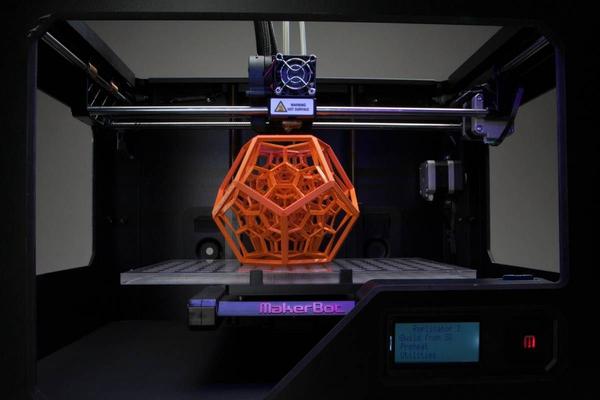 As global and domestic economies shifted away from coal, the Appalachian region suffered, with a higher rate of joblessness and one of the lowest household income rates in the country, as reported by the Appalachian Regional Commission.
As global and domestic economies shifted away from coal, the Appalachian region suffered, with a higher rate of joblessness and one of the lowest household income rates in the country, as reported by the Appalachian Regional Commission.
Over the last two decades, leadership at the local and state levels have sought to change that through investments in manufacturing, education, and technology. The Appalachian Regional Commission offers $1 million grants to “support educational opportunities and institutions, especially by connecting skill development and workforce training with local and regional business interests and opportunities.”
As additive manufacturing rapidly expands in a wide range of businesses (as seen in this blog post!), hiring managers are looking for employees trained in working in digital spaces and fluent in CAD. Universities are looking to address this market lead by creating large and well funded innovation hubs.
See the Investment the Pennsylvania State University is Making
Besides training tomorrow’s workforce in CAD and 3D printing, universities are starting to see the benefits of deploying 3D printers across a wide range of educational disciplines.
At UMass Lowell, that meant modernizing its sculpting and 3D design courses for the 21st century. Enter Yuko Oda, who joined the university in 2017 and got started by ordering a multitude of 3D printers, including a Formlabs SLA machine.
Yuko is able to take her passion for art and technology into the classroom, currently teaching sculpture, 3D modeling and animation, and interactive media. Most students know that they’re required to understand 3D animation and 3D modeling for future careers in various fields, including sculpture design for cinema. For studio artists, 3D modeling has become an essential skill.
“Students sculpt a 3D model, import it into Zbrush, then print in various resins, including Clear Resin. The ability for Formlabs machines to show intricacies that were modified in Zbrush is unparalleled when compared to other printers in the lab.”
Yuko Oda
One of the most promising new developments in sculpture is the integration of 3D printing and Virtual Reality (VR).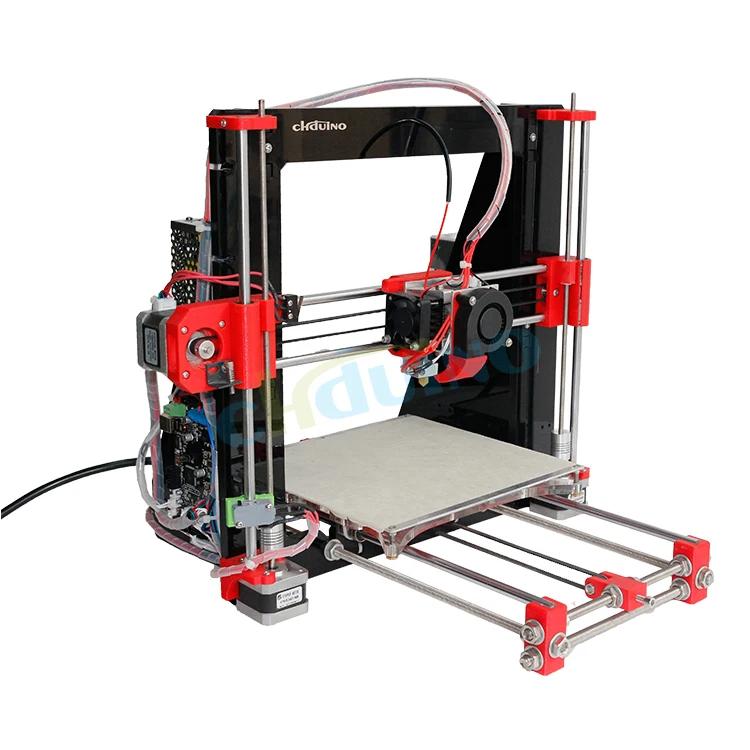 This is especially salient for students intimidated by 3D design. VR is rapidly reducing barriers for 3D design, allowing artists and students to create with their hands in programs such as Oculus Medium. Yuko has taught 8th graders how to create a 3D object in 30 minutes in VR, and then print the artwork on a 3D printer. Even for seasoned sculptors, VR reduces the time it takes to go from an idea to a physical object, potentially opening up new areas of experimental art.
This is especially salient for students intimidated by 3D design. VR is rapidly reducing barriers for 3D design, allowing artists and students to create with their hands in programs such as Oculus Medium. Yuko has taught 8th graders how to create a 3D object in 30 minutes in VR, and then print the artwork on a 3D printer. Even for seasoned sculptors, VR reduces the time it takes to go from an idea to a physical object, potentially opening up new areas of experimental art.
Learn How How UMass Lowell Integrates Art and Technology
While caretakers at ZooTampa were performing a routine check-up on a 25-year-old great hornbill, they found a lesion at the base of the bird’s casque, the yellow helmet-like growth on top of the head. Further examination determined that the bird, named Crescent, was suffering from life-threatening cancer.
The cancer, located near the bird's skull, couldn't be removed because it housed part of the bird's sinuses. The team wanted to know if they could remove the casque, and replace it with a 3D printed replica designed specifically for this bird.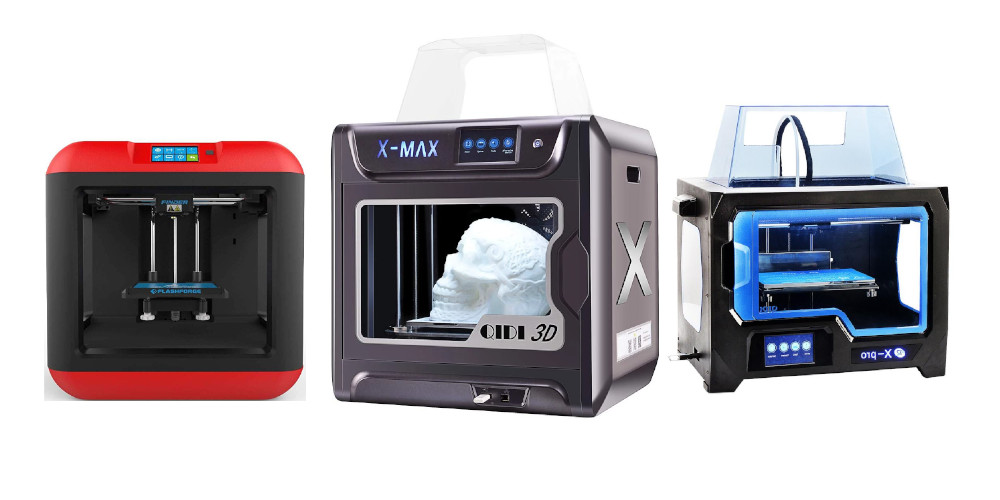 Patient-specific prosthetics and devices have been used before in human procedures, but never for a great hornbill. Would it be possible, and if so, which materials would be safe for the bird?
Patient-specific prosthetics and devices have been used before in human procedures, but never for a great hornbill. Would it be possible, and if so, which materials would be safe for the bird?
ZooTampa says the successful 3D-printed “replacement beak,” was created using BioMed White Resin. This material is an opaque white material for biocompatible applications requiring long-term skin contact or short-term mucosal contact. Special among Formlabs SLA 3D printing materials, this medical-grade material is validated for short-term tissue, bone, and dentin contact.
3D Printing and Veterinary Medicine
During the COVID-19 pandemic and following supply chain crises of 2021/22, many firms turned to 3D printing to help keep machines online and products rolling off the factory floor. The expanded use of in-house 3D printing to create end-use parts, such as replacement parts for machines, has made additive manufacturing a key tool to address supply chain problems.
Formlabs commissioned the 2022 3D Printing Applications Report to better understand what, if anything, has changed recently among 3D printing users. The report demonstrates the shift in attitudes around 3D printing from an R&D and prototyping tool to an invaluable manufacturing technology needed to meet evolving consumer preferences and overcome supply chain challenges. Whether working to ease supply chain constraints, creating limited run products, or personalizing devices, businesses have been forced to rethink how they produce goods to meet customer demand.
The report demonstrates the shift in attitudes around 3D printing from an R&D and prototyping tool to an invaluable manufacturing technology needed to meet evolving consumer preferences and overcome supply chain challenges. Whether working to ease supply chain constraints, creating limited run products, or personalizing devices, businesses have been forced to rethink how they produce goods to meet customer demand.
End-use parts printed on the Fuse 1.
An IR sensor purge printed on the Fuse 1 in Nylon 12 Powder.
Building 3D printers is always an engineering challenge. Packing industrial-grade performance into an affordable, sleek desktop machine requires years of engineering and design work. This was especially true of Formlabs’ much anticipated selective laser sintering (SLS) 3D printer, the Fuse 1.
One of the tools Formlabs engineers used to prototype parts was the Fuse 1 itself. But the use of 3D printing didn’t stop at prototyping. Today, every single Fuse 1 unit shipped to customers contains multiple production parts printed directly on a Fuse 1 using Nylon 12 Powder.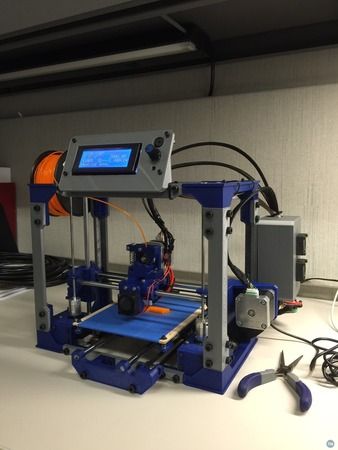
Using the Fuse 1 SLS printer to prototype and create end-use parts offered three main advantages, according to Seth Berg, the engineer program manager overseeing the Fuse 1:
- The design freedom to create complex parts without internal support structures.
- Reducing supply chains by prototyping and creating end-use parts in-house.
- Eliminating outsourcing to achieve an affordable solution for small-batch production with a proven, versatile Nylon 12 material.
To see how the team did this, and which end-use parts on the 3D printer and 3D printers, watch the video below.
In May of 2020, Forbes ran an article titled: How 3D Printing Test Swabs Will Help Fulfill America's Shortage. They noted that the 3D printing industry has come together to tackle the COVID-19 swab shortage head on, with Formlabs, HP, Origin, Carbon, Desktop Metal and more working to ramp up swab production.
The impact of the COVID-19 pandemic required a global, concerted response.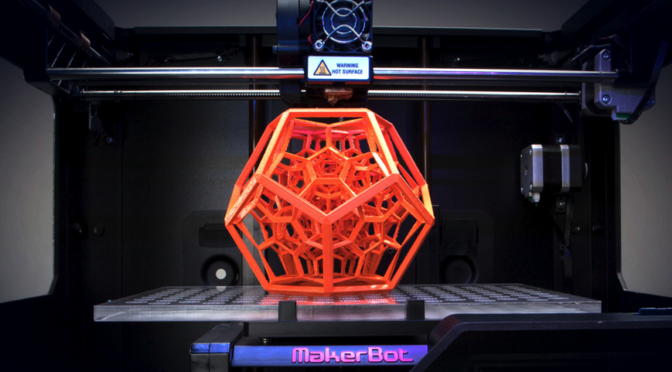 Through collaborating with USF and Northwell, Formlabs enabled a solution that has been deployed worldwide. With the accessible design, affordable equipment, and validated processes, the swab design enabled over forty million COVID tests in twenty five countries. Over the last year, Formlabs 3D printers have continued being used by governments and healthcare providers to improve patient testing and care. This global solution is just one example of how the agility of 3D printing can benefit the public good.
Through collaborating with USF and Northwell, Formlabs enabled a solution that has been deployed worldwide. With the accessible design, affordable equipment, and validated processes, the swab design enabled over forty million COVID tests in twenty five countries. Over the last year, Formlabs 3D printers have continued being used by governments and healthcare providers to improve patient testing and care. This global solution is just one example of how the agility of 3D printing can benefit the public good.
We saw this happen dramatically in Singapore, where Eye-2-Eye Communications ramped swab production to over 30,000 swabs per day to help keep the city safe.
“It has not only been an excellent opportunity to showcase the advantages of 3D printing for rapid design and development but it has also shown Formlabs effectiveness in being able to mass produce products in very short timeframes. Also, as we see spikes in cases across the globe it is reassuring to know we can scale our production relatively easily to meet demand if required,”said Chief Executive Officer of Eye-2-Eye Communications, Miles Podmore.
One controller with buttons printed on the Fuse 1 (left), and another with buttons injected molded (right).
One problem with creating custom aftermarket parts is these orders are typically low volume, and need to evolve in response to product updates by the original manufacturers. But with the rise of in-house 3D printing, custom manufacturing has sprouted in multiple industries.
Battle Beaver Customs is focused on delivering a premier gaming experience through custom gaming controllers. Their modifications make the controllers more responsive and more competitive, allowing players to increase their gaming potential and reach peak performance across a range of games. Rapid prototyping with the Fuse 1 SLS 3D printer allows Battle Beaver Customs to quickly change their mount and button designs. When building custom consumer products, quick turnaround times can pay dividends for businesses looking to stay ahead of their competitors. According to Head of Research and Design at Battle Beaver Customs, Michael Crunelle, the “Fuse 1 has been great for being able to make changes quickly, from concept to end-use part. Our competitors can’t keep up with us."
Our competitors can’t keep up with us."
JetBoatPilot, a marine parts and accessories manufacturer, has built a reputation as an authority in the industry by creating aftermarket products that improve the performance and low speed handling of jet powered boats.
JetBoatPilot utilizes the Form 3 SLA and Fuse 1 selective laser sintering (SLS) 3D printers to prototype and manufacture aftermarket parts. A newly designed and now top performing product, the Lateral Thruster 2.0, was designed and manufactured on the Fuse 1. Equipped with the Fuse 1 and Nylon 12 Powder, JetBoatPilot was able to cut costs by 6x compared to their previous manufacturing methods.“I probably would have made that (aluminum version) retail price somewhere in the $400 dollar range, maybe even $600 dollar range, if I really had pushed it. I wouldn't have sold nearly as many at $600. But now I'm selling it for $199 and the customer is happy as they can be. And I'm twenty times the cost of goods,” says JetBoatPilot founder Will Owens.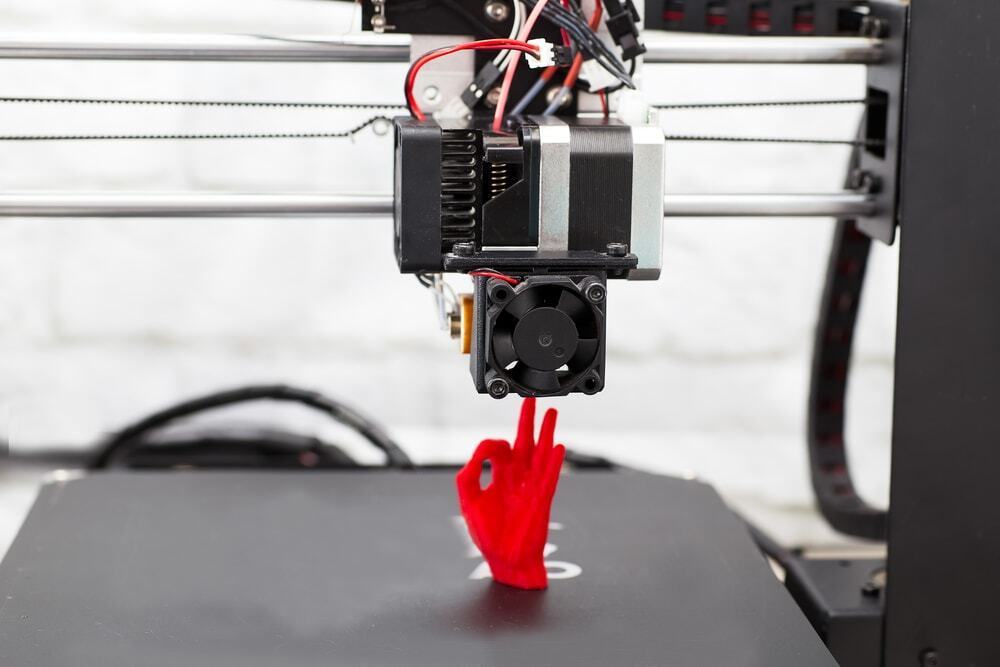
With 928 stores spanning across 48 countries, Lush Cosmetics is a retailer known globally for making creative and crowd pleasing products such as Massage Bars, Body Butters, Bath Bombs and more, attributes its success to being able to respond quickly to trends and customer demand.
To bring new, industry defining, highly-detailed cosmetics to life, Lush needed to turn to 3D printing for much more than prototyping new shapes. They’ve invested in a next-generation additive manufacturing center for mold creation, tooling, and end-use parts.
The Lush Cosmetics team vacuum forms using 3D printed molds in-house.
“We use our Formlabs 3D printers for a mix of mold creation, custom tooling, and end-use parts. We’re a reactive business and having this capability in-house means we don’t need to share designs externally as we own everything in the product development process,” said Damien Carter, Innovation Lab Manager at Lush Cosmetics.
See How Lush Cosmetics Operates
3D printing is unleashing new possibilities and business opportunities, such as mass customization.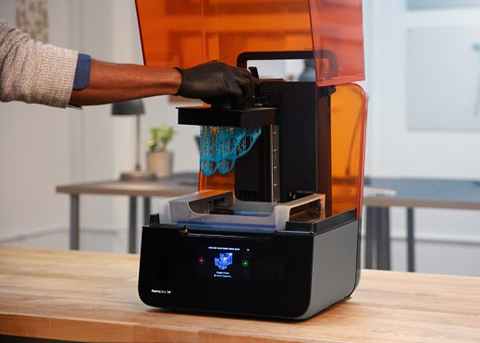 What used to be too complex, prohibitively expensive, or impractical to produce with traditional methods is available at no extra cost with digital technologies, giving full control to designers and opening the door for fully customizable consumer products to become a reality.
What used to be too complex, prohibitively expensive, or impractical to produce with traditional methods is available at no extra cost with digital technologies, giving full control to designers and opening the door for fully customizable consumer products to become a reality.
A good example of this is Gillette’s Razor Maker™, which gives customers the opportunity to customize the handle of their razor by picking various designs, colors, or adding custom text.
“For Gillette, piloting Razor Maker™ represents a crucial step in our customization journey where new technology and new business models must come together in order to deliver products that are as unique as our consumers,” said Donato Diez, global brand manager for Gillette and Razor Maker™
Learn How Gillette Uses 3D Printing to Unlock Consumer Personalization
White Paper
This guide will provide manufacturers with insights into the different approaches to customization, how to choose the most applicable approach, and more.
Download the White Paper
Dentistry has also been one of the most prominent drivers of 3D printing investment, desktop 3D printers are an increasingly common sight in dental labs and practices. As a matter of fact, the popular clear aligners, thermoformed on 3D printed molds, are possibly the single most successful use of 3D printing we've seen to date.
Over the past ten years, 3D printing has so advanced in dental that now no new dental labs are opening without using some form of digital dentistry. With materials so good they can 3D print permanent crowns, full dentures, and more.
3D printing technologies thrive in an environment where our unique bodies require custom solutions. As a result, the dental industry is going through a rapid digital transformation with digital workflows bringing increased efficiency, consistently high quality, and lower costs to dental labs and practices.
Five Ways 3D Printing Has Redefined the Dental Industry
Next time you’re out for a night on the town, keep your eyes peeled for our next unexpected 3D printing use-case: 3D printing is coming to custom glasses frames.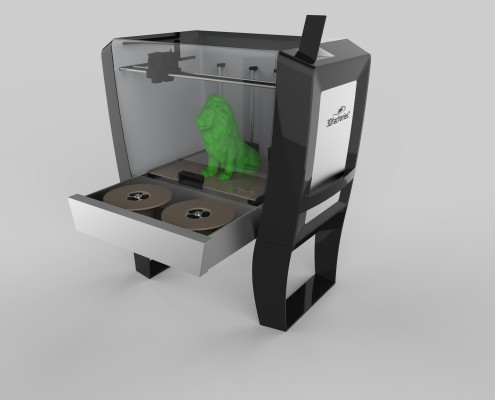
Marcus Marienfeld AG set themselves apart from conventional glass frames, using different and unique production techniques to create their frames. Recently they started integrating selective laser sintering (SLS) 3D printing into the production line for frames in their Swiss workshop for printing end-use parts and rapid tooling for forming titanium.
“You get very inventive and imaginative when you have a 3D printer in-house. I can do things with little effort that I wouldn't otherwise try," said Marcus Marienfeld.
See the 3D Printed Glasses
Visualizing 3D printing-driven changes in the way things are made does not require the feats of imagination it once did. As workflows have developed over the last several years and gained footholds in various industries, we are beginning to see that revolutionary potential demonstrated.
From dentistry and across healthcare to consumer goods, architecture, and manufacturing, the public is interacting more and more with the end products of 3D printing.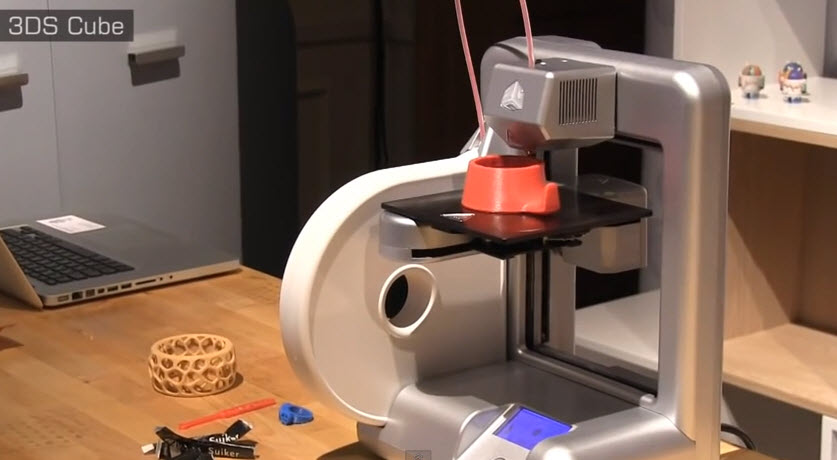 Making custom parts cost-efficient, cutting lead times and overheads, and empowering customers by bringing them closer to the products they want—we can only expect the influence of 3D printing to continue expanding.
Making custom parts cost-efficient, cutting lead times and overheads, and empowering customers by bringing them closer to the products they want—we can only expect the influence of 3D printing to continue expanding.
Explore Formlabs 3D Printers
How a 3D printer works and what it is for - Code magazine
Over the past couple of years, there has been a lot of news about someone printing something on a 3D printer:
- hearing aid,
- products from milk,
- residential building,
- robotic fingers,
- brain implants,
- statue of David 1 mm high,
- ready-made electronic devices.
Let's see how this technology works, what its limitations are, and whether it has a future.
What a 3D printer is for
3D printers print three-dimensional things from plastic or other materials. They can be used at home or in production. For example, here is what you can 3D print:
Battery case. Hinged LED lamp. Minecraft style lamp. Model of an old castle.
Minecraft style lamp. Model of an old castle. How it works
Usually a 3D printer uses special plastic to print. It comes in the form of powder, liquid resin or plastic wire in coils. It is from this material that the printed part will consist.
Further, roughly speaking, the process looks like this:
- this plastic is either applied using a moving nozzle;
- or "baked" with a laser;
- or the excess is cut out of the array of finished material using a movable cutter (but this is more like turning and is often not classified as 3D printing).
Material takes the shape you want, layer by layer. When all layers are passed, the detail turns out.
Fast 3D Printing with Moving Nozzle:
Due to the fact that the printer needs to constantly heat the plastic, 3D printers do not print very quickly: a part the size of a phone can take 15-20 minutes. The speed also depends on the thickness of the layer: the thicker the layer, the faster the print. But with a large layer thickness, the part may turn out to be sloppy: layers will be visible:
The speed also depends on the thickness of the layer: the thicker the layer, the faster the print. But with a large layer thickness, the part may turn out to be sloppy: layers will be visible:
Printing Technologies
3D printing is very much needed in industry and industrial design, so there is a whole zoo of printing technologies, each with its own advantages and disadvantages.
Stereolithography . Instead of plastic, a special resin is used here, which hardens in the light. The detail is also formed in layers, but the layers themselves are almost invisible - the resin fills the relief and the detail seems to be a single whole even from a very close distance.
Polymer Synthesis (SLS) . This type of printing uses powder, which is then baked with a laser beam. Since the laser beam can be focused anywhere with the desired accuracy, very complex models with high detail can be obtained in this way of printing:
Polyjet. The peculiarity of this technology is that it can print objects simultaneously from different materials. This allows you to create almost any thing of the most complex shape, which immediately have the desired properties. You can even print sneakers that you can wear on this printer:
The peculiarity of this technology is that it can print objects simultaneously from different materials. This allows you to create almost any thing of the most complex shape, which immediately have the desired properties. You can even print sneakers that you can wear on this printer:
What can be printed
You can print anything on a 3D printer if you have the right material for printing, a finished model and a large enough printer.
Prototypes. Often, before starting production, a company needs to understand how comfortable a thing will turn out to be in use. In order not to launch a line for the sake of one product, it is printed on a 3D printer and they look at what needs to be changed or finalized. On such prototypes, you can notice, for example, that the buttons turned out to be too small and it would be inconvenient to press them, or that the buttons turned out to be very far from the fingers and you will need to reach them specially.
Parts and parts. Sometimes it is difficult or almost impossible to find a spare part for a tool: the manufacturer does not produce them or the model has been out of production for a long time. In this case, you can find a three-dimensional model of the desired part on the Internet or draw it yourself in the editor, so that you can then send it to print.
Medicine. Three-dimensional printing is actively used in medicine to create new joints, tissues and treat patients. The difference from traditional printing is that instead of plastic, they print with special “living” solutions that interact with each other and behave like real organs and tissues. Thanks to this technology, it is now easy to print a joint that a surgeon can put on a person instead of a damaged one.
Hobbies and modeling. It is easy to print various miniatures, collectible figures and models on a 3D printer.
Manufacture of other robots.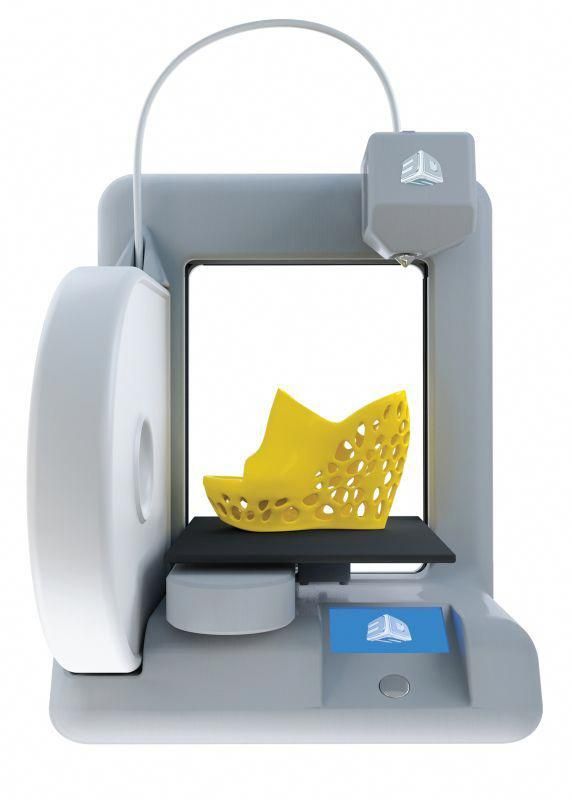 3D printers do not yet know how to produce servos and microprocessors, but they already know how to print bodies and frames of robots.
3D printers do not yet know how to produce servos and microprocessors, but they already know how to print bodies and frames of robots.
Houses and buildings. We take hefty rails with motors and controllers. We install a movable nozzle, on which you can supply a building mixture (concrete or polymers). You can print the walls of buildings. Unlike traditional brick, panel and block construction technologies, the shape of the walls and the building as a whole can be any. The foundation, floors and roof are not yet printed, but this is for now.
Imagine: we send fifty 3D printers on a mobile basis to Mars. For a year, each of them prints another 100 printers. Then all these 5,000 printers disperse around Mars and begin to build the first colony. While they are building, we order furniture from Ikea, arrange delivery, and just in time for delivery, our robots will finish printing everything. Apple trees on Mars are unlikely to bloom, but five-story buildings can.
While they are building, we order furniture from Ikea, arrange delivery, and just in time for delivery, our robots will finish printing everything. Apple trees on Mars are unlikely to bloom, but five-story buildings can.
Criticisms and issues
❌ Slow and no guarantees: Printing is quite slow, not accurate enough. A huge problem in amateur printers is marriage. For example, a part can peel off the substrate right during printing, and hell will happen. Or the motors will decalibrate, and the nozzle will begin to miss the right places.
❌ Low efficiency: To print a 10 x 10 cm part, you need a printer that is at least 50 x 50 cm, which will cost several hundred dollars.
❌ Not the strongest materials: 3D printing has so far been limited to plastics and resins. There are separate printing technologies based on metal powder, but if you need a steel part, you don’t need a 3D printer, but a normal turner and machine tool. But not every detail can be made on the machine.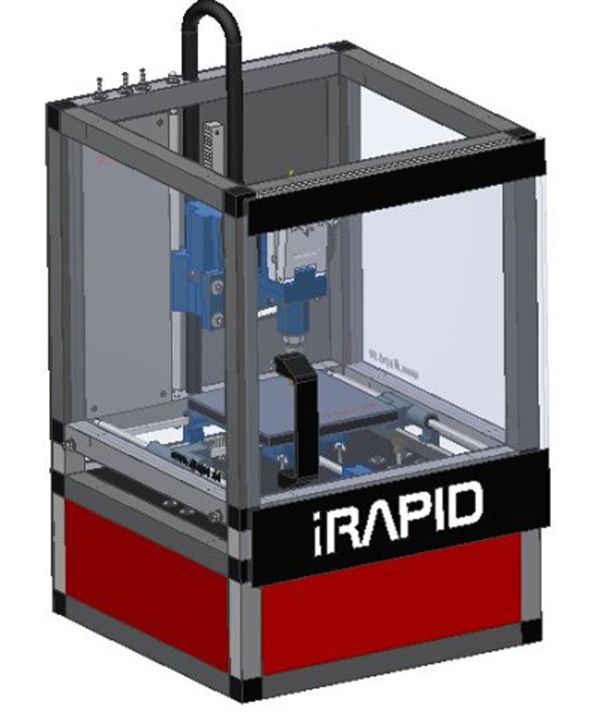
❌ It is not always clear why. In industry, 3D printers are used for prototyping, but these technologies are not used in mass production. For home use, it’s also unclear: 3D printers print small plastic things for amateur projects ... and that’s it. There are very few cases when an ordinary person might want to print something applicable in the household at home.
What's next
Next, technology will overcome all the problems of infancy and will print food, furniture and internal organs for you. Not necessarily in our lifetime, but our children and grandchildren will surely find it.
Text:
Mikhail Polyanin
editing:
Maxim Ilyakhov
Artist:
Dania Berkovsky
corrector:
Irina Mikheeva
Buildings:
Maria Dronova
social networks:
Oleg Veshkurtsi0003
examples and perspectives of home, household, educational and commercial use
Creating real objects from digital models seemed to be something unattainable, from the world of fantasy. However, technological progress is moving forward. One of the significant results of its rapid development was 3D printers - devices for three-dimensional modeling. Until recently, installations cost “like a Boeing wing”, and only in the last decade has 3D printing become available to all consumers. The demand for printers has increased due to the development of modern domestic and foreign models of economy class with an intuitive interface.
However, technological progress is moving forward. One of the significant results of its rapid development was 3D printers - devices for three-dimensional modeling. Until recently, installations cost “like a Boeing wing”, and only in the last decade has 3D printing become available to all consumers. The demand for printers has increased due to the development of modern domestic and foreign models of economy class with an intuitive interface.
Explore the possibilities of additive technologies. This is a good way for printer owners to expand their horizons, and for entrepreneurs to see promising areas in small business.
Contents:
- 3D Printer Features
- Use of 3D printers at home
- In the space industry
- Aviation
- In architecture
- Weapon
- Clothing
- Art
- Medicine
- Surgical planning
- Manufacture of prostheses
- Bioprint
- Dentistry
3D printer features
Three-dimensional printers are equipment for printing a physical object based on its digital 3D model. The operation of most devices is based on the layer-by-layer deposition of the material or the gradual solidification of the photopolymer resin. As "consumables" they use all kinds of plastic, metal powder, building mixtures, glass powder and other raw materials.
The operation of most devices is based on the layer-by-layer deposition of the material or the gradual solidification of the photopolymer resin. As "consumables" they use all kinds of plastic, metal powder, building mixtures, glass powder and other raw materials.
There are several types of printing technologies that differ in the principle of operation, the properties of materials, the software used:
- melting or sintering of powder;
- photopolymerization;
- extrusion;
- laser stereolithography;
- lamination.
Using printers, you can create models of any shape and complexity of execution. 3D printing allows you to reduce the cost of manufactured products and speed up the production process.
Use of 3D printers at home
3D modeling technology has been used for various purposes in everyday life. It is easy to print a hook for the hallway, a case for a smartphone, a tablet, a toy for a child at home on a printer. To do this, you need to perform a number of tasks:
To do this, you need to perform a number of tasks:
- make a digital model of the object on a computer or download a ready-made template;
- divide the workpiece into many transverse layers using special software;
- start the device for printing - layer-by-layer build-up of the product.
The printer will become an assistant in the house. Let's be clear: we are surrounded by numerous plastic parts that often fail or get lost. It’s not at all by the way that the handle of the washing machine may break, the blender gear will fall apart, or some fragile button will crack. Using a 3D printer to recreate a broken polymer element is not a problem, but an exciting creative process.
Devices for 3D modeling allow you to print household items or decor in any room in the house:
- for the kitchen - towel hooks, napkin holders, spice rack, kitchen utensils;
- in the bathroom - soap dishes, shelves for shampoos, shower gels;
- in the bedroom - shades for lighting fixtures;
- in the office - organizers, pencil holders;
- in the living room - vases, figurines, photo frames, flower pots and much more.

If you wish, you can organize "your own business" from home. Using a printer to produce original Christmas and children's toys, souvenirs, bags for phones, tablets for sale is a profitable idea.
In the space industry
Three-dimensional modeling is a promising technology in the aerospace industry. And it is already actively used. Manufacturer SpaceX announced the Dragon v2 spacecraft, its engine is assembled using printed parts.
3D printing is also used in space. In 2016, NASA sent an industrial printer to the ISS that can operate in a vacuum. With it, astronauts will be able to print the desired item or part, thereby reducing the time to wait for delivery from Earth.
Aviation
Additive technologies have found a place in the aviation industry. Boeing and Lockheed Martin Corporation of America have developed laser-sintered engine parts, load-bearing components and ventilation systems.
Architectural
The ability to create virtual and then printed three-dimensional models is a breakthrough in the field of architecture and design. With the help of printers, it is easy to make a model of a future building for accurate visualization of its features, presentation to investors or buyers. Layouts have been used in architecture for a long time, but it is printing that leads to the acceleration and simplification of project development.
With the help of printers, it is easy to make a model of a future building for accurate visualization of its features, presentation to investors or buyers. Layouts have been used in architecture for a long time, but it is printing that leads to the acceleration and simplification of project development.
Weapons
Three-dimensional technologies are not always used for good. Weapon printing is a prime example of this. Even budget printers can print a functional plastic gun. From one shot, it will collapse, but even a single pull of the trigger can cost a person his life.
However, it is believed that people should be able to self-defense. So, employees of the company Defense Distributed posted three-dimensional models of the Liberator pistol on the network. They also manufacture spare parts for the Kalashnikov assault rifle and the AR-15 rifle. With them, it is possible to assemble weapons using a printer and available consumables.
Clothes
Polyamide powders are suitable materials for clothing and underwear. Nylon printed items have an unusual shape, they combine high strength with elasticity.
Nylon printed items have an unusual shape, they combine high strength with elasticity.
New York-based design lab Continuum Fashion presented printed clothing at a fashion show. The announced models are non-experimental and can be purchased from the Shapeways website.
Art
Create a wax replica of Donatello's David or Venus de Milo - why not? If desired, copies of famous wax sculptures can be purchased, but they will be expensive, and they are not sold everywhere. A 3D printer will help out art lovers: load a digital model into the device, select the material for printing and start making a replica. A three-dimensional image of the original can be obtained from a regular photo with its subsequent conversion to 3D. Or use a handheld 3D scanner with the ability to capture overall products.
Medicine
Three-dimensional modeling is used in various medical fields.
Surgical planning
Careful preparation is the key to a successful operation.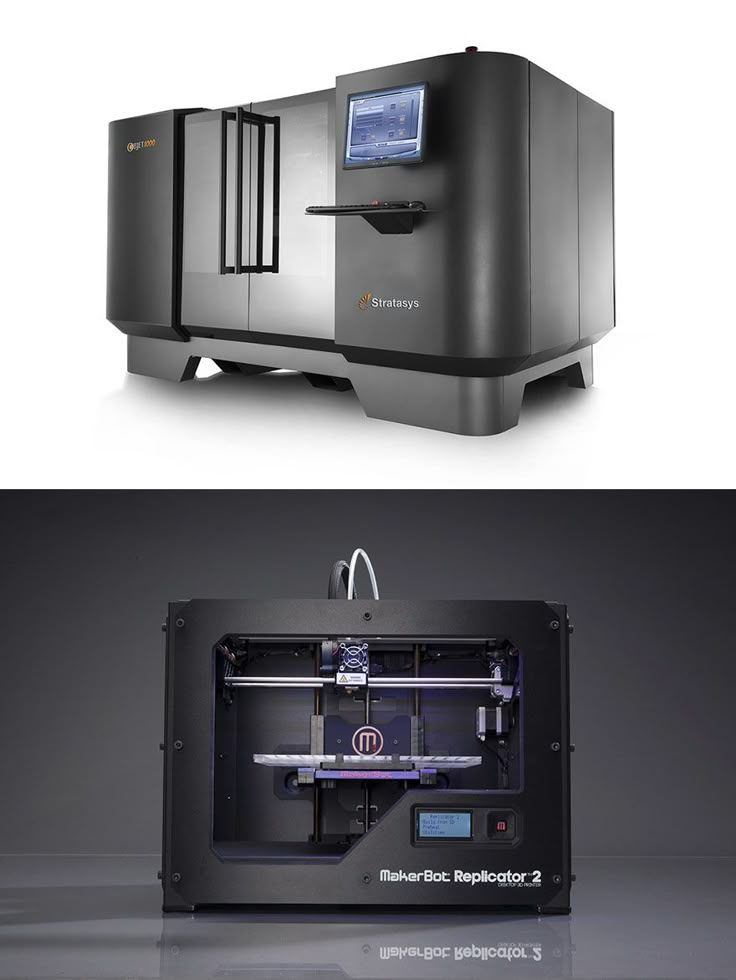 With the help of scanners, an image of the necessary area of the body is obtained, a copy is printed from the virtual model. It makes it easier for surgeons to simulate an operation: try out different scenarios, perform instrument testing, and calculate timing.
With the help of scanners, an image of the necessary area of the body is obtained, a copy is printed from the virtual model. It makes it easier for surgeons to simulate an operation: try out different scenarios, perform instrument testing, and calculate timing.
Manufacture of prostheses
3D printers are used in prosthetics. They allow you to create prostheses that correspond to the anatomical features of the patient. Swedish manufacturer Arcam is developing devices for electron beam melting. Their task is the execution of solid metal structures, including titanium ones. They are used in prosthetics to replace joints, bones or limbs.
Bioprint
Engineers are developing organic imitators that are similar in properties and structure to natural tissues. Printing vessels, muscles or whole organs - all this has become possible. The matter has not yet reached the transplantation of printed organs, but work is underway. In parallel, methods are being developed to restore damaged bones and cartilage. In medicine, “3D biopens” have found application, with which living cells are applied to injured tissues for their healing.
In medicine, “3D biopens” have found application, with which living cells are applied to injured tissues for their healing.
Dentistry
Dental braces made of plastic, crowns, dentures, jaw implants - all this can be quickly and profitably produced on a 3D printer. Align Technology engineers have developed a technique in which the oral cavity is scanned and the subsequent manufacture of individual prostheses. Here, liquid resin polymerization technology is used, it provides a high degree of accuracy of finished structures.
Food stuffs
Print minced meat, sugar syrup, melted chocolate - fiction? Not at all! Food printers have ceased to be the prerogative of fairy tales and science fiction films. They are able to produce food of unusual shape.
British company Cadbury uses 3D printers to make molding stencils and candy prototypes that require a complex production line. Italian Barilla uses machines for making pasta, German Biozoon Food Innovations uses dishes for the elderly.
A popular food production device is the Foodini. The printer works with any pasty raw material. Its drawback is poor temperature processing of food, but it may soon be eliminated.
Characters
Creating a collection of movie characters, comics, games, figurines of famous personalities has become possible with 3D printers. Want a small replica of the giant robot, Hulk, Iron Man? They can even be printed on a compact desktop printer. Collecting a collection of favorite characters is available to everyone.
Domestic robots
Arduino, a low-cost board company, has allowed users to design various electronic devices. Many have taken the idea into service for the equipment of the "smart home" system. All you need to do is print the case, install the servo, board and get your home robot.
To help people who do not understand soldering or programming, specialists from the Massachusetts Institute are developing a project to automate the construction of robots. According to the plan, you will need to set the functions of the future device, choose a design - the system itself will send the necessary details for printing.
According to the plan, you will need to set the functions of the future device, choose a design - the system itself will send the necessary details for printing.
Musical instruments
Printers can print drums, guitars, flutes, violins. Yes, professional musicians may doubt their quality, since valuable pieces are designed for years, and they serve for decades. The printed tool will not be able to become a worthy alternative. But no one says that it should be all plastic. The printer can be used to print individual parts, such as the neck or soundboard. Due to three-dimensional machines, it will be possible to make tools that are unusual in shape and design.
Shoes
Printers can print sandals, boots, shoes, slates or individual parts of shoes: insoles, heels, soles. Nylon or other flexible materials (Ninjaflex, FilaFlex) are suitable for this. The advantages of printed shoes are conformity to the anatomical features of the foot, comfort, wear resistance.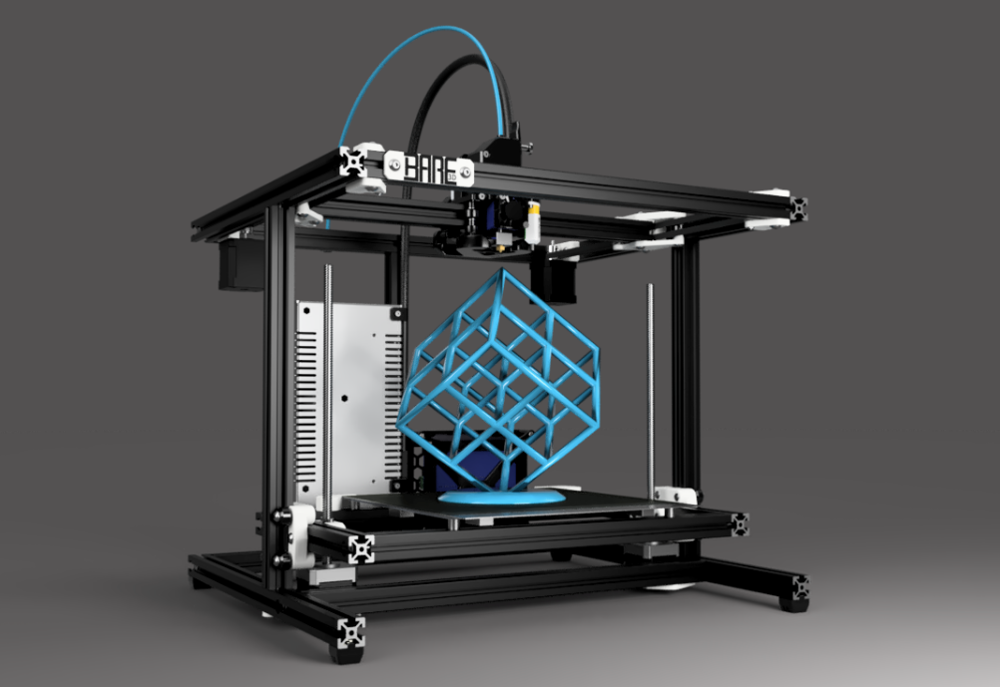 A nice bonus is the possibility of producing products that are unique in appearance with openwork heels that wrap flowers around a thin hairpin.
A nice bonus is the possibility of producing products that are unique in appearance with openwork heels that wrap flowers around a thin hairpin.
Printed footwear has already become the hero of fashion shows, but the time is not far off when it will become available to the mass consumer.
Medicines
3D printing has proven promising in the pharmaceutical industry for printing drugs. Her virtues:
- up to 50% higher product retention compared to standard production;
- exact dosage of the substance;
- reduction of drug manufacturing time;
- the ability to produce drugs according to an individual prescription.
Organization Organovo is working with new technologies. Engineers use a gel material to precisely connect the components. 3D printers are not suitable for the serial launch of medicines. But they have found use in the manufacture of medicines for individual prescriptions.
Automotive
Many car mechanisms can be printed.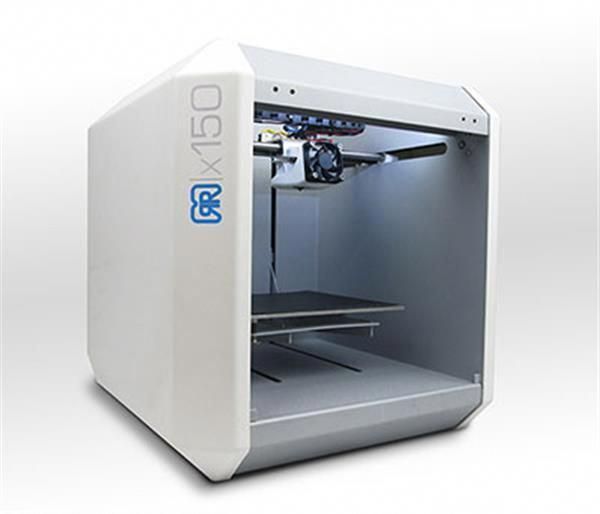 In the world there are already examples of the use of components made on printers. "Formula 1" distinguished itself, it involved printed parts in fireballs. The American Local Motors announced a car at all, the body of which is made only from printed parts.
In the world there are already examples of the use of components made on printers. "Formula 1" distinguished itself, it involved printed parts in fireballs. The American Local Motors announced a car at all, the body of which is made only from printed parts.
So far, the mass production of spare parts for printers is not economically feasible - it is expensive.
Customization and molding
Adding decorative elements to finished products is an original way to update and transform them. Wicker lampshades for sconces, an unusual frame for a bicycle, a car with author's tuning will attract attention, because there are no analogues of our own production.
Furniture
No, we're not just talking about toy items. 3D printers make it possible to produce furniture that is difficult to distinguish from "traditional" products. This result can be achieved through the use of special plastic with the addition of micro-sawdust. For example, Laywoo-D3 has a woody smell.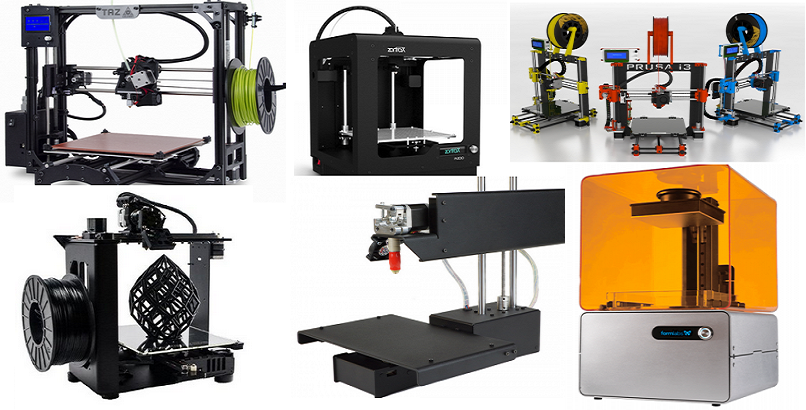
You can print anything: tables, stools, shelves, chairs, bedside tables. Products are easy to machine, they can be coated with paint, varnished.
There are examples of metal furniture creation in the world. Dutch designer Joris Laarman designed a machine for 3D printing without the use of a laser and vacuum chambers. 3D machines are used to paint with metal through the air - a great option for getting interesting furniture with an elegant wicker design.
Jewelry industry
3D printing helps to reduce and speed up the production of jewelry at the expense of cheap consumables. With printers, jewelers can redesign jewelry and quickly produce prototypes.
Advantages of 3D technology:
- simplification of the launch of jewelry production;
- obtaining high-quality jewelry: even, smooth, with high detail;
- efficiency - elimination of risks of waste of precious metals.
The use of 3D printing is relevant for many brands, including Cityscape Rings, Lace, Radian, Ross Lovegrove and others.
Construction
3D printing of buildings has become achievable. For the construction of structures, a mixture is taken, including cement, filler, plasticizer and other additives. The construction composition is squeezed out of the extruder nozzle in layers, repeating the computer model. 3D printers simplify and speed up the construction of structures, lead to a reduction in waste and manual labor costs.
There is no ideal machine for 3D construction in the world yet, but developments are underway. The Chinese organization Winsun has released a large-sized apparatus (60x100x400cm) for the production of floors, walls with the necessary holes and niches for utilities. Its minus is immobility (the finished building will need to be moved to another place).
Scientists from Spain, on the other hand, are designing small robotic systems. Their principle of operation is based on fastening to finished building elements and erecting the following parts. Time will tell which of the construction devices will be more preferable.
Education
3D printers are available not only for large companies and leading research centers. Prices for economy models start from several thousand, which makes them popular in the field of education. They are purchased for the equipment of schools, secondary special and higher educational institutions.
Advantages of 3D printing in education:
- Visual teaching of the sciences. The teacher will be able to show a section of the engine, human bones or a three-dimensional model of hydrogen - all this will be a good motivation for learning.
- Development of students' imagination and creativity. 3D modeling develops spatial thinking, helps to visualize the fruits of the imagination.
Summing up
3D printers are the most amazing technology of recent times. Initially, it was available for researchers, scientists, and now an inexpensive machine can be bought for entertainment. With it, it is possible to create various products and objects, design objects, develop an unusual design for everyday things. In production, the scope of use of devices is amazing: with their help you can print everything from food to architectural structures. Probably, such machines will soon become familiar appliances, like a vacuum cleaner, a refrigerator or a TV.
In production, the scope of use of devices is amazing: with their help you can print everything from food to architectural structures. Probably, such machines will soon become familiar appliances, like a vacuum cleaner, a refrigerator or a TV.
However, the widespread use of such equipment in production is still not so rosy. 3D modeling has inherent disadvantages that make mass production unprofitable. Not all installations connect different types of plastic, many of them cannot work with different shades and temperatures. Such opportunities are inherent in expensive machines. With their use, the cost of a printed product will be several tens of times higher than the cost of a conventional item. 3D printing is more efficient to use for the production of unique products, where the accuracy of detailing is important.
Even with the elimination of all the shortcomings, mass 3D printing does not augur well. Demand for manufactured goods will decrease tenfold, the economy will collapse.


